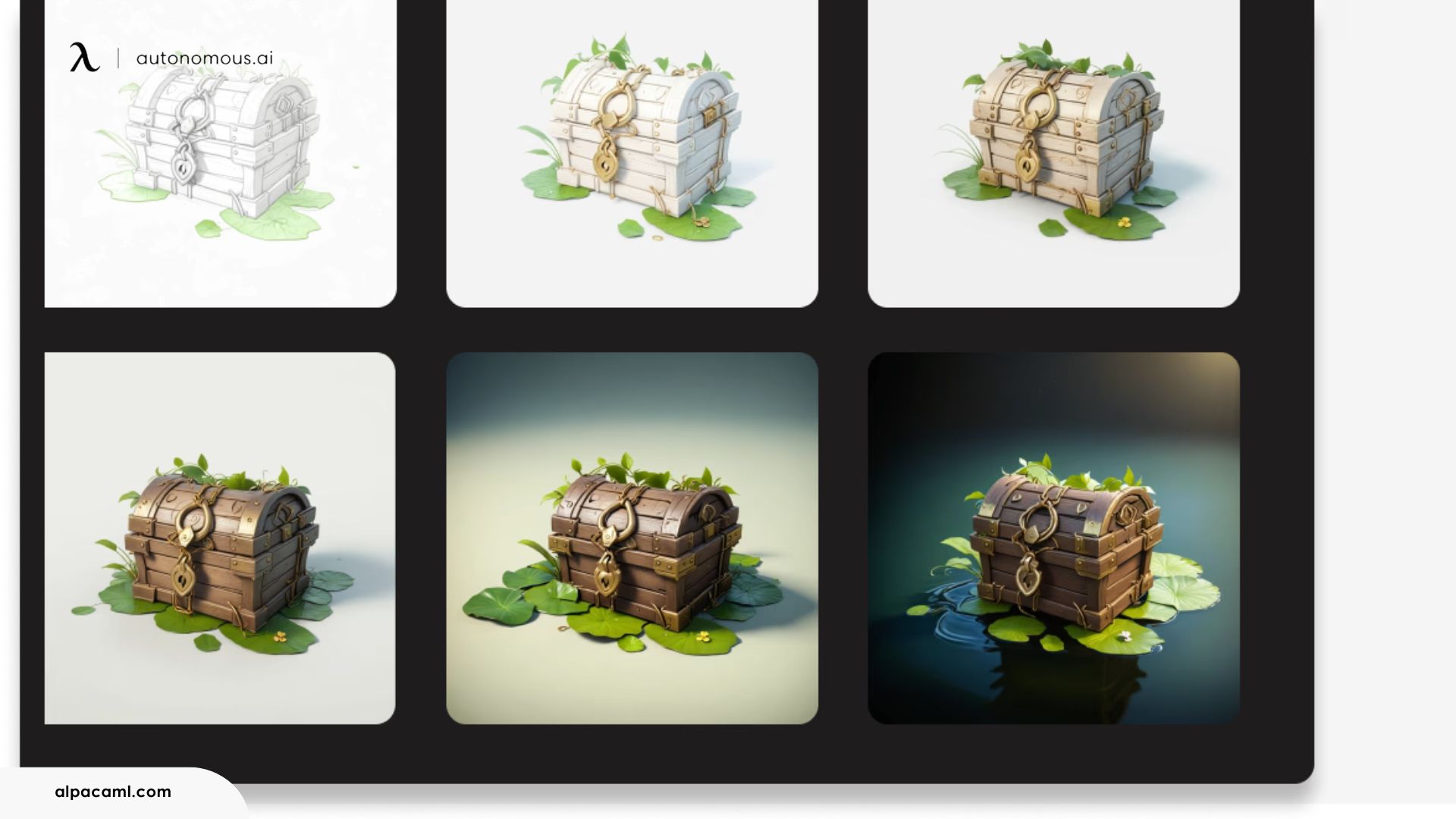
Table of Contents
The field of Artificial Intelligence (AI) is witnessing a rapid rise in the development and application of Large Language Models (LLMs). These sophisticated AI systems are trained on massive datasets of text and code, enabling them to perform a wide range of tasks, including generating human-quality text, translating languages, writing different kinds of creative content, and answering your questions in an informative way.
Two prominent LLMs generating significant buzz are Alpaca and LLaMA AI. But which one reigns supreme? This blog post delves into a comprehensive comparison of Alpaca and LLaMA AI, exploring their functionalities, strengths, and potential applications to help you determine the "better" option for your specific needs.
A Glimpse into Current Trends
AI continues to dominate innovation across various industries, from marketing to healthcare to customer service. In 2024, several trends are shaping the AI landscape, especially AI in the workplace:
- AI Democratization: More open-source AI models and tools are available, giving smaller companies access to the powerful technology that was previously available only to large corporations.
- Customization: AI models are increasingly customizable, allowing businesses to tailor AI systems for specific applications and workflows.
- Ethics and Privacy: As AI adoption grows, so does the emphasis on building ethical models that are free of bias and protect user privacy.
- AI in the Workplace: From automating mundane tasks to enhancing decision-making, AI is becoming indispensable in modern workplaces.
Now, let’s dive into the details of Alpaca and LLaMA AI to understand how they fit into these trends.

Alpaca: An AI-Powered Toolkit for Artists
Alpaca is a smaller, fine-tuned version of OpenAI’s GPT model. Developed by researchers at Stanford University, Alpaca is based on the LLaMA model from Meta AI but fine-tuned for specific tasks using more targeted training data.
At its core, Alpaca is an AI toolkit created for artists, providing a specialized platform for generating images from sketches, reference images, or even doodles. It stands out for its ability to support rapid iterations, allowing users to experiment with styles and compositions without the time-consuming manual processes typically involved in digital art creation. Artists can drop their assets, adjust settings, and quickly generate refined versions of their sketches, all while maintaining control over the final artistic output.
Alpaca’s capabilities span three primary use cases:
- Controlled Image Generation: Transform sketches, doodles, and reference images into fully rendered artworks.
- Iterating with Speed: Make rapid iterations to refine style, composition, and texture.
- Personalized Tool Sets: Create art that reflects your personal style by leveraging custom stylized models or using Alpaca’s general models.
By focusing on these areas, Alpaca helps artists accelerate the creative process, from concept development to final rendering.

How Does Alpaca Work?
Beyond its capabilities for digital artists, Alpaca also has its roots in academic AI research. Developed at Stanford University, Alpaca is a fine-tuned language model built on Meta’s LLaMA 7B model.
Alpaca's development presented two major challenges: the need for a strong pre-trained language model and high-quality instruction-following data. The release of Meta’s LLaMA model addressed the first challenge, providing a robust foundation for Alpaca's capabilities. The second challenge was met using OpenAI's text-davinci-003, which generated 52,000 instruction-following demonstrations in a cost-effective manner.
By fine-tuning the LLaMA model using the self-instruction method, Alpaca delivers performance on par with larger models, but with significantly lower computational costs. The fine-tuning process took only three hours on 8 80GB A100 GPUs, highlighting the model's efficiency.
This method has allowed Alpaca to remain accessible for academic research, while still showcasing behaviors and outputs similar to larger models like OpenAI's GPT-3.5.

Highlight Features of Alpaca
Alpaca is designed with several core features that enable artists to move from concept to polished artwork quickly and efficiently:
Controlled Image Generation
Alpaca allows artists to use Sketch to Image and Render Sketches tools, which take basic sketches or reference images and transform them into fully realized artworks. This process is particularly useful for guiding composition, as artists can create initial sketches and let Alpaca render them with specific styles or textures.
Additionally, Alpaca’s Reference Image Composition feature lets artists generate artwork based on a collection of reference images, offering control over how these elements come together in the final output.

Iterating with Speed
One of the most significant benefits of Alpaca is its ability to generate multiple variations of a concept quickly. Using tools like Iterate on References, artists can make rapid changes to their sketches or references, experimenting with different styles and textures without starting from scratch.
The Imagine Ideas and Generate Texture Maps features enable artists to create unique variations of their work from text prompts or refine texture details. This ability to quickly iterate makes Alpaca ideal for concept artists who need to explore multiple ideas in a short period.
Personalized Tool Sets
Alpaca allows artists to create custom models based on their own style by incorporating representative assets that define their preferred aesthetic. This means users can develop unique artistic outputs by generating artwork that reflects their personal style. Whether using custom stylized models or the general Alpaca models, artists retain creative control throughout the process.
Alpaca’s suite of features enables digital artists to not only work faster but also maintain their creative vision across projects.

LLaMA AI: Revolutionizing Edge AI and Vision
LLaMA AI (Large Language Model Meta AI) is a state-of-the-art language model developed by Meta AI (formerly Facebook AI). LLaMA was introduced to provide a more accessible yet powerful alternative to models like OpenAI’s GPT series. LLaMA’s primary advantage lies in its open-source nature, allowing developers to fine-tune and adapt the model for a variety of applications.
The LLaMA model, especially with the releases of LLaMA 2 and LLaMA 3, has significantly improved its performance, accuracy, and ethical safeguards. This makes it a strong contender in the AI language model race, especially for developers looking for a customizable solution.

How Does LLaMA AI Work?
LLaMA AI is built on transformer architecture, similar to Alpaca and GPT. It uses a pre-trained large-scale model with billions of parameters to understand and generate human-like text. LLaMA is designed to be lighter and more efficient than other large models, making it easier to run on smaller hardware setups. Developers can download and fine-tune LLaMA for specific tasks, reducing the need for extensive training from scratch.
LLaMA's flexibility is a major draw, as it can be adjusted for different applications depending on the specific dataset and user requirements.
Highlight Features of LLaMA AI
- Open-Source: LLaMA is available as an open-source model, giving developers greater control over customization and deployment.
- Scalable: LLaMA can be scaled up or down depending on the application, making it a versatile choice for various business and research needs.
- Efficient Performance: Despite being a large model, LLaMA is optimized for performance, requiring fewer computational resources compared to other large language models like GPT-4.

Comparison: Alpaca vs. LLaMA AI
When comparing Alpaca and LLaMA AI, it's important to note that while both models share a common foundation, they serve distinct purposes and cater to different user needs. Alpaca is fine-tuned from LLaMA, and although it retains some of LLaMA’s core capabilities, it introduces unique features designed to streamline and enhance specific tasks for artists and researchers. Here's a deeper look at how Alpaca vs. LLaMA AI stack up against each other:
1. Purpose and Design
LLaMA (Large Language Model Meta AI) is designed as a versatile, general-purpose language model suitable for a wide range of NLP tasks. Its open-source nature allows developers to customize and scale it for various applications, from content generation to code assistance. LLaMA is more suited for researchers, businesses, and developers looking for a powerful AI that can be adapted to a multitude of tasks.
In contrast, Alpaca is a more specialized, fine-tuned model based on LLaMA. It is tailored to enhance the creative process, particularly for digital artists and creatives. Alpaca's core strength lies in its ability to take early sketches and turn them into stylized, rendered artworks quickly. It's designed for rapid iteration and controlled image generation, making it an ideal tool for creatives who need to experiment with styles, compositions, and textures without the extensive manual effort.

2. Customization and Flexibility
LLaMA’s greatest strength is its open-source accessibility. Developers have the freedom to fine-tune and customize LLaMA for specific applications, whether for research, enterprise-level tasks, or more niche use cases. Its flexibility allows for a broad range of modifications, making it ideal for both small-scale and large-scale projects.
While Alpaca is not as flexible as LLaMA in terms of full-scale customization, it offers personalized tool sets specifically for artists. Users can generate art in their own style by leveraging Alpaca’s ability to recognize and replicate the aesthetics of their input assets. Alpaca provides controlled environments for artistic iterations, focusing on helping artists refine their work with precision. Its customization is more geared toward the creative process rather than general-purpose applications.

3. Performance and Efficiency
LLaMA is designed for efficiency across a broad range of NLP tasks. It handles large datasets and can generate coherent, high-quality text outputs. However, because it is a general-purpose model, LLaMA may require additional fine-tuning and computational resources to perform specific tasks optimally. It is one of the best AI tools for writing, summary and translation, and conversational AI.
Alpaca is optimized for rapid iteration and concept refinement, allowing artists to quickly generate variations of their designs. Its focus on speed and efficiency makes it ideal for creatives who need to produce multiple versions of the same concept, refine textures, or experiment with styles. For digital artists, Alpaca outperforms LLaMA in terms of speed and ease of use for specific creative tasks, but it’s more limited in scope when it comes to general NLP tasks.

4. Applications
Both Alpaca and LLaMA AI can be used for a variety of NLP tasks, but the scope and focus of their applications differ:
LLaMA AI: LLaMA’s versatility allows it to be applied across a wide range of domains, including:
- Content generation, like those explored in AI tools for Marketing.
- Language translation
- Chatbots and virtual assistants
- Coding assistance
- Research and data analysis
Alpaca: Alpaca is more focused on creative applications, excelling in:
- Digital artwork generation
- Concept design and refinement
- Iterative creative processes
- Controlled image rendering from sketches and references
For developers or businesses requiring a broad range of AI solutions, LLaMA is the more powerful and adaptable choice. On the other hand, Alpaca is better suited for artists who want a streamlined tool to enhance their creative workflows and iterate on designs.

5. Resource Requirements
LLaMA AI: Due to its general-purpose design, LLaMA often requires more computational resources, especially for larger models like LLaMA 70B. However, it balances this with powerful performance, making it suitable for those who can invest in the necessary hardware or cloud resources to fine-tune and deploy the model.
Alpaca: One of Alpaca’s key advantages is its ability to achieve high performance with fewer resources. For artists who may not have access to powerful computational tools, Alpaca offers an efficient solution that minimizes resource usage while maximizing output quality. This makes it a practical option for small teams or independent creators.

7. Pros and Cons
Aspect | Alpaca | LLaMA AI |
Customization | Focused on creative use cases, limited general customization | Highly customizable for a wide range of NLP tasks |
Performance | High performance for creative tasks like image generation | High performance for both small and large NLP applications |
Efficiency | Optimized for rapid iterations with fewer computational resources | Requires more resources, but scales well for larger tasks |
Scalability | Ideal for small to medium creative projects | Scales efficiently for enterprise-level applications |
Applications | Digital art, design refinement, rapid concept iteration | NLP, chatbots, content generation, language translation, etc. |
Resource Requirements | Low resource requirements, ideal for creatives | Higher resource requirements, but powerful for larger tasks |
Choosing Between Alpaca and LLaMA AI
The choice between Alpaca and LLaMA AI depends largely on your needs and goals.
- For developers, researchers, and businesses looking for a versatile, general-purpose AI model, LLaMA AI offers greater flexibility, customization, and scalability. Its open-source nature and wide range of applications make it ideal for those seeking a robust, adaptable language model for various NLP tasks.
- For artists and creatives, Alpaca is the better choice, offering a specialized toolkit that enhances creative workflows. Its ability to rapidly iterate on sketches and refine concepts makes it an invaluable tool for digital art and design. Alpaca’s focus on efficiency and ease of use ensures that artists can achieve high-quality results without extensive computational resources.
Both models are powerful in their own right, but the best option depends on your specific use case. Whether you’re working on AI-powered creativity or general NLP tasks, there’s a solution designed to meet your needs.
For those interested in more AI tools, you can explore the best AI tools and how they can fit into your tech ecosystem.

Conclusion
When comparing Alpaca vs. LLaMA AI, the best model for you depends on your specific use case. Alpaca offers a more specialized, efficient solution for businesses with smaller projects and limited resources. Meanwhile, LLaMA AI provides more flexibility and customization, making it ideal for developers looking for a powerful, scalable AI solution.
To explore more AI tools and how they can improve your productivity, check out the AI tools like ChatGPT and the best AI tools for coding. Whether you choose Alpaca or LLaMA AI, the right model will help you stay ahead in the fast-evolving world of AI.
Spread the word
.svg)








